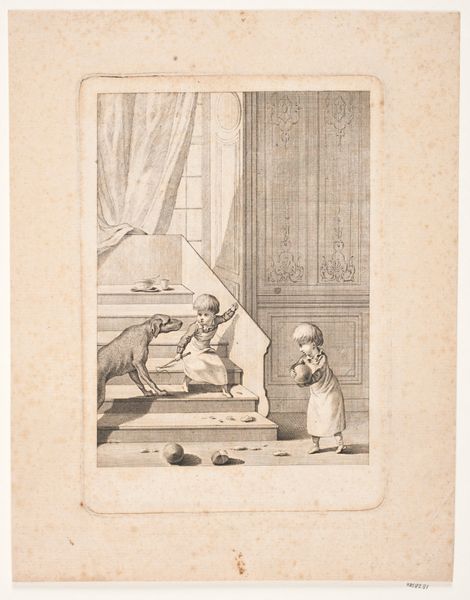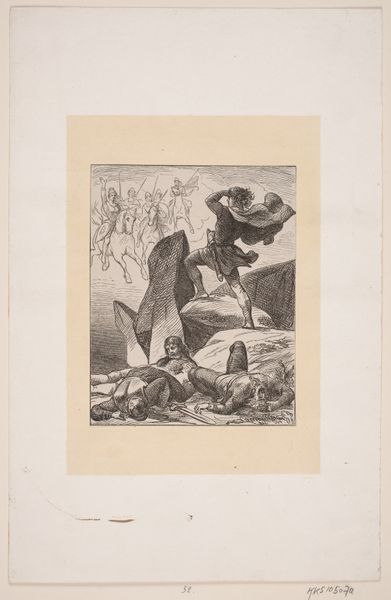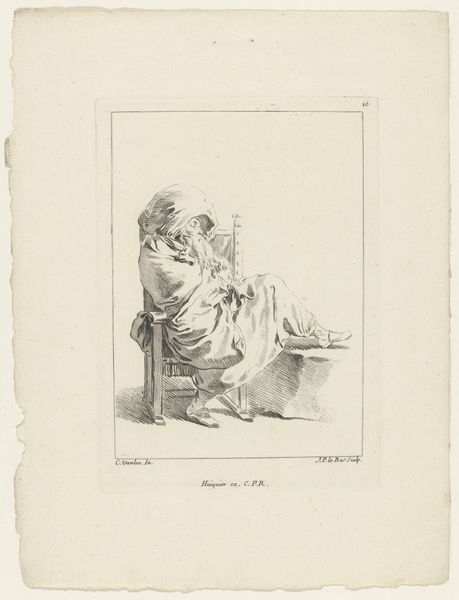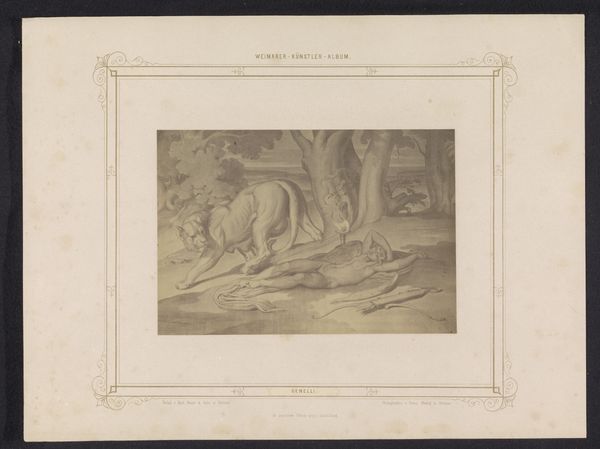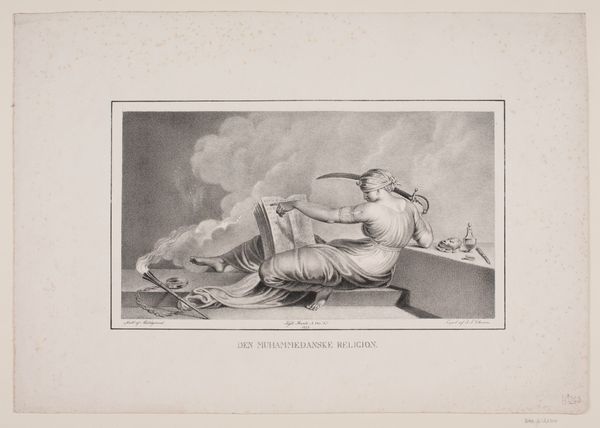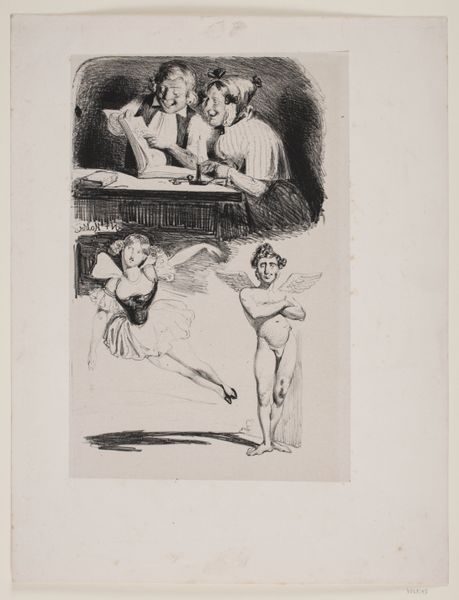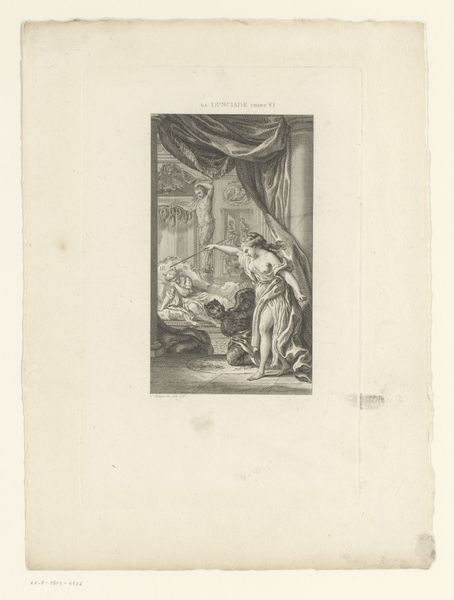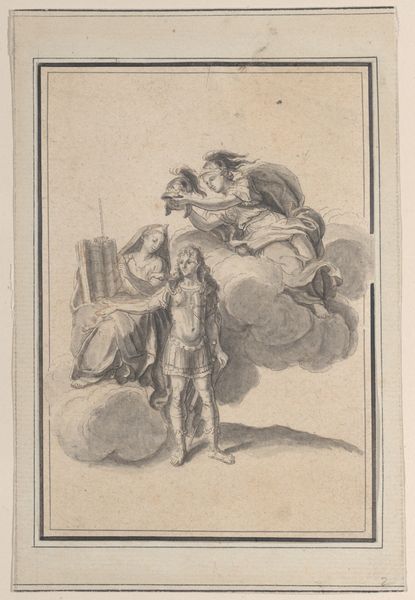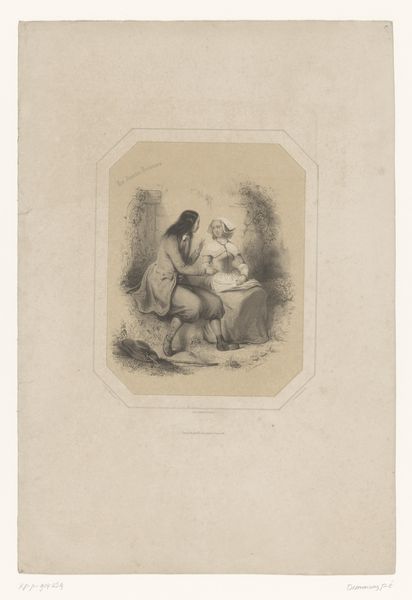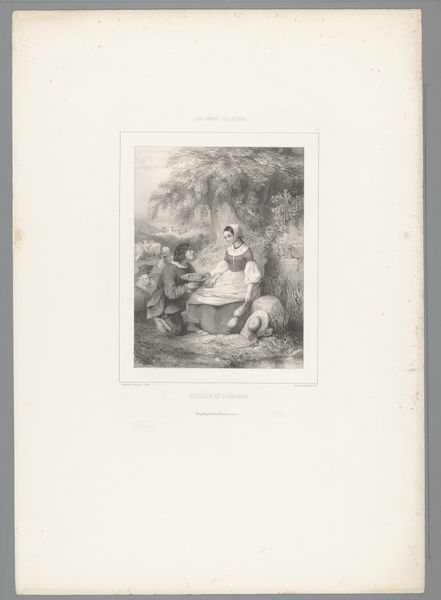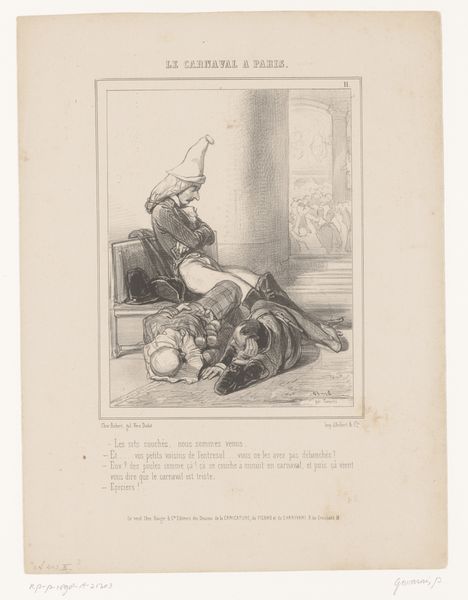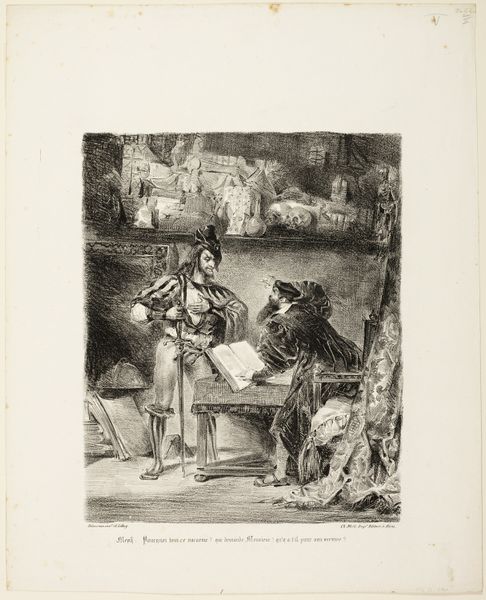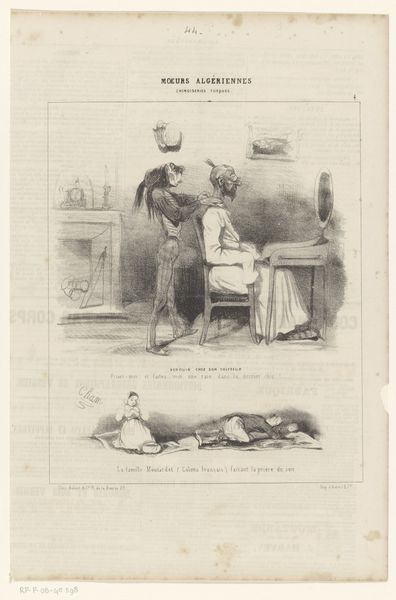
drawing, print, pencil
#
portrait
#
drawing
# print
#
caricature
#
pencil sketch
#
dog
#
coloured pencil
#
pencil
#
realism
Dimensions: height 333 mm, width 242 mm
Copyright: Rijks Museum: Open Domain
Curator: Ah, I see you're drawn to Honoré Daumier's "Man met twee honden in bad" from 1837, here at the Rijksmuseum. What strikes you first? Editor: It's just...utterly charming! There's this cozy absurdity, a little old lady giving dog biscuits in the tub, all rendered in these soft, sketchy lines. Is that pencil and charcoal? It feels so intimate, like a stolen glance into a very private, very quirky moment. Curator: Precisely! Daumier was a master of capturing everyday life. This is a print, though it replicates the feeling of a quick pencil sketch, perfect for widespread consumption through journals and papers. His lithographic prints critiqued bourgeois society, offering social commentary on the shifting economic classes, even through the guise of, as you say, this quirky image. Editor: Bourgeoisie getting their dogs wet, eh? It's wonderfully strange, really. It makes you wonder what else is going on just out of view. Are we laughing with them or at them, or just kind of smiling, bemused? It’s so evocative. Curator: Indeed. It would've likely been mass produced in a period marked by industrial growth in France. This availability enabled a democratization of art and political discourse and, with subjects that could be interpreted through satire, challenged conventions of art displayed in formal exhibitions. These were circulated among a vastly larger viewing public through newspapers and journals, a medium that impacted perception on every class. Editor: The print medium becomes the message; very cool. But that tenderness with the dogs – it is palpable, no? Regardless of wealth or society, a bath is still bath, something essential and shared. I imagine his pencil practically danced over the page to give us that feeling of such intimacy with something mundane, and funny, and oddly...lovely. Curator: Yes, exactly! He elevates the everyday with that loose sketch, while also creating affordable pieces available on newsprint. Did it all help make a wider impact that art had a role to play in French culture during a major social restructure? Daumier seems to pose the very question to us, I suppose. Editor: Well, I know I feel I need to dry myself off now, so, perhaps that’s his lasting impact! Thanks for these material insights! Curator: And I for yours! It's delightful how the material reality gives us some grounding when viewing art in a whole new light.
Comments
No comments
Be the first to comment and join the conversation on the ultimate creative platform.
